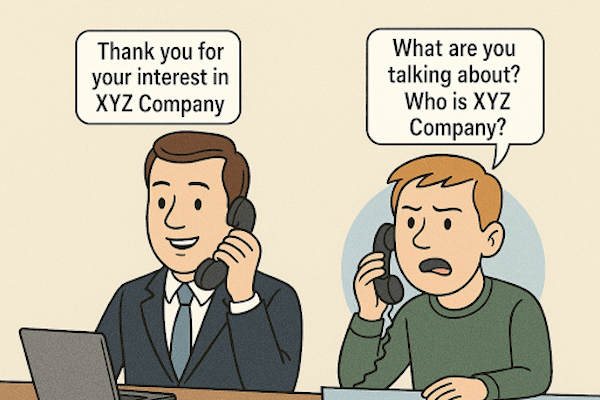Turnaround a Business: Are you Ready?


Turnaround a Business: Are You Ready?
A business turnaround occurs when a business has faced declining financial results over a period of time, necessitating strategic and operational adjustments to recover and achieve financial growth once more.
It can be challenging for a founder, CEO, or business owner who is struggling to admit that it's time to consider significant changes to turn around their business. Many founders view it as a negative or feel like they have failed. If you are reading this and feel that way, you should know there is nothing to be ashamed of if your business is facing challenges due to competitive pressure or new business models that may not have existed in the past. You can either complain about it or embrace it and use it as motivation. A business turnaround should be seen as an exciting new opportunity that revitalizes the drive for positive change - an opportunity rather than a problem.
Regardless of the industry, if you are considering seizing this new opportunity for your business to thrive, you should begin by following these Four Steps to Turnaround a Business.
Step #1: Find a Proven Turnaround Specialist
A turnaround specialist or consultant is a strategic business advisor with expertise in resolving complex issues affecting revenue, operations, and scalability. If you are a small to medium sized business (SMB), seek out a turnaround specialist with a proven track record of success working with companies of your size.
Some CFO’s, Executives, and Advisors may believe that this is an unnecessary additional expense during a time when the business is facing financial challenges. Most SMB turnaround specialists charge only a fraction of the high ticket consulting rates typically charged by larger consultancies. Also, instead of being assigned a team member, you can and will collaborate directly with the top team member or members. The ideal turnaround specialist should be willing to discuss their fee along with results-based incentives to encourage alignment and a partnership approach.
A business turnaround can be a stressful process if not managed correctly. While most executives might be involved in a few turnarounds in their careers, a turnaround consultant handles many business turnarounds each year. Their ability to swiftly and methodically navigate the process is invaluable.
Step #2: Conduct an Independent Sales Audit
An independent sales audit or revenue impact assessment examines the various dependencies that affect revenue generation. This analysis includes, but is not limited to, evaluating sales, marketing, customer service, operations, product, pricing, talent, feedback, and market data.
While many larger companies may hire an expensive consulting firm, assemble a team to collaborate, and give the initiative a catchy project name like "Project Barracuda," smaller businesses do not have that luxury and rely on the turnaround consultant to lead this. Their resources must continue to handle day-to-day operations while determining the best way forward. The turnaround consultant should gather input from all key stakeholders to ensure they are heard and feel included in the turnaround process.
During the assessment, some employees may adopt a wait-and-see attitude. This can have a negative impact on other team members and often carries over into the initial stages of the pivot. Therefore, it is crucial for managers to keep their teams focused on the end goal which is a successful future.
As the picture starts to become clearer on the desired future state of a business undergoing a pivot, the importance of clearly understanding the resource gaps between the current state and the desired future state of the business, cannot be overstated.
Step #3: Align the Team by Over-Communicating
Once the sales audit has been completed, reviewed, and approved by the CEO/Founder and executive team, the hard work begins. In almost every small business turnaround, a divide and conquer approach is typically required. This is when the leadership, Board, and team must be aligned through effective communication, management, and expectation setting. It is the job of the CEO to enthusiastically and confidently communicate the new direction to get buy-in from his or her team.
Some team members may prefer to be involved only with future versions of the business because it's the shiny new penny. However, they must understand that everyone needs to wear multiple hats, as mentioned earlier, to both run the business and generate new revenue.
There will be individuals who may not wish to be part of the future direction and are checked out. This inevitably puts them on the at risk list. A negative attitude and a lack of passion usually translate into an underperforming team member, who can really hinder the team's progress. If someone is not fully onboard or is underperforming, it is best to part ways amicably as soon as possible to reduce unnecessary friction and to lower operational expenses.
Step #4: Execute The Strategy and Measure Progress
The strategy implemented can vary in complexity depending on factors such as the turnaround nature, cash runway, potential for recapitalization, and the true cause of the financial downturn. In many instances, it will involve focusing on the product, adjusting pricing strategies, cutting operating expenses, managing cash flow, and potentially restructuring teams or downsizing staff.
Each quarter, key stakeholders should present their priorities to the team and progress should be tracked and measured at least weekly, but ideally in real time. The responsible team should have regular 15 minute stand-up meetings to ensure execution is on track, remove blockers, and minimize roadblocks. Longer meetings waste too much time and time is precious.
This process of turning around a business is ongoing and may require several iterations based on information gathered from customers and prospects, which takes time. However, clear signs of progress validating the future direction should be evident, with new revenue as the primary validator of the path forward.
Conclusion:
Most mature companies have had to reinvent their business several times along the way. Infrastructure changes, processes evolve, market demands change, and new technology is introduced - it's part of the business lifecycle. All businesses have to deal with this as well as unexpected challenges, such as the recent social media outage incident that impacted millions of users and many marketers.
There is much more detail involved in a business turnaround than just these four steps, which is where a company like Justellus which specializes in providing fractional sales leadership and transformation services can accelerate your speed of success. Turning around a business should be viewed as a challenge that reignites a company’s passion, that will enable it to thrive for many years to come, and position the business for an exit at the right time, now or in the future.
For additional sales tips, sales insights, and revenue growth best practices, visit Justellus’ Sales Growth Blog.




